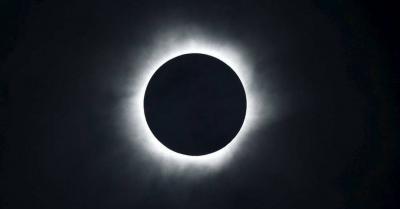Astronomy enthusiasts are eagerly awaiting an important event expected to occur next month, which will not happen again for another 20 years. The moon will completely block the sun in North America, along a path starting from Mexico, through the United States, and into Canada, during a total solar eclipse. This phenomenon is expected to take place on April 8th. It can be viewed as a total eclipse in Mexico, the United States, and Canada, and as a partial eclipse in Western Europe, North America, Northern South America, the Pacific Ocean, the Atlantic Ocean, and the Arctic region, while it will not be visible in the Arab region. The midpoint timing coincides with the conjunction of the month of Shawwal in the current Arabic year.
The eclipse will last approximately 5 hours and 10 minutes from start to finish. In a total solar eclipse, the moon passes between the sun and the Earth, covering the sun completely along a narrow path on our planet’s surface, known as the "path of the eclipse" or the moon's shadow path. Dr. Mohamed Shaaban, a research assistant at the National Institute for Astronomical and Geophysical Research, explained that the eclipse occurs when the Earth, moon, and sun are nearly aligned, with the moon in the middle, at the time of the new moon when it is in the new moon phase, casting its shadow on the Earth. In this case, if we are in a suitable location to observe the eclipse, we will see the dark disk of the moon crossing the bright disk of the sun.
During the day, the sky will darken as if at sunset or dawn. Nocturnal animals are known to become confused, believing night has arrived. In areas along the total eclipse path, people will be able to see the sun's corona, the star's outer atmosphere, which is typically invisible due to the sun's brightness. Observers outside the total eclipse path will witness a partial eclipse, where the moon will obscure most of the sun's face but not all of it. A cloudy day may spoil the view, especially considering how soon this eclipse will occur.
**Where Will the Total Eclipse Occur?**
According to NASA, the eclipse will begin on April 8th over the southern Pacific Ocean, making landfall on the Pacific coast of Mexico at approximately 11:07 AM Pacific Time before entering the United States in Texas. Its path will then traverse through Oklahoma, Arkansas, Missouri, a small part of Tennessee, Illinois, Kentucky, Indiana, Ohio, a small area of Michigan, Pennsylvania, New York, Vermont, New Hampshire, and Maine. It will then enter Canada in Ontario and move through Quebec, New Brunswick, Prince Edward Island, and Cape Breton, exiting the continental North America at the Atlantic coast of Newfoundland, Canada, at 5:16 PM Newfoundland Time. The partial eclipse is scheduled to be visible to people in all 48 contiguous U.S. states.




